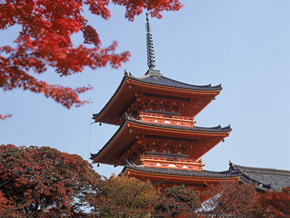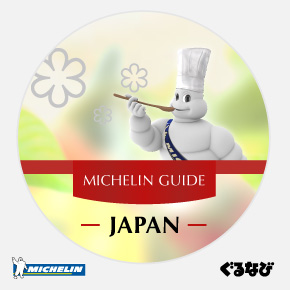 There are also non-meat steaks, such as fish or tofu, but here we will discuss the most popular kind of steak in Japan: beef steak. Steak is often served with cooked vegetables, such as potatoes, carrots, or peas, along with a soup and salad. Steak often comes with a choice of bread or rice as well.
There are also non-meat steaks, such as fish or tofu, but here we will discuss the most popular kind of steak in Japan: beef steak. Steak is often served with cooked vegetables, such as potatoes, carrots, or peas, along with a soup and salad. Steak often comes with a choice of bread or rice as well.
Origin of Steak
History of Steak in Japan
 While it is unclear where exactly steak originated, it is clear that it has been around for a long time. The history of steak in Japan, however, is comparatively short. Because of the influence of Buddhism and the importance of livestock for their ability to work on a farm, consumption of meat in Japan was prohibited for a long time. During the Meiji era (about 140 years ago), Western culture made its way into Japan, and it is believed that around this time that Japanese people began to eat steak.
While it is unclear where exactly steak originated, it is clear that it has been around for a long time. The history of steak in Japan, however, is comparatively short. Because of the influence of Buddhism and the importance of livestock for their ability to work on a farm, consumption of meat in Japan was prohibited for a long time. During the Meiji era (about 140 years ago), Western culture made its way into Japan, and it is believed that around this time that Japanese people began to eat steak.
Japanese-Style Steak
In Western countries, tougher and leaner steaks are the norm, but in Japan, steaks with fat that is well-distributed throughout the meat are prized. This is called "marbling," and densely-marbled beef is the ideal in Japan. This kind of beef is soft and juicy with complex flavors. Japanese beef is referred to as "wagyu," with different areas making different "brands" of beef. Wagyu is very expensive due to the extra care necessary in raising and feeding the cow. The beef is graded based on the cow's breed and how it was raised.
Grades of Beef
 Beef in Japan is given two grades: a letter and a number. These two grades are usually given together, e.g., A-5 grade.
Beef in Japan is given two grades: a letter and a number. These two grades are usually given together, e.g., A-5 grade.
| Yield Grade: Three grades from A to C, with A being the best. Yield grade is decided based on the percentage of usable meat available in a certain area after skin, bones, organs, etc., have been removed. A higher percentage is better. |
Quality Grade: Five grades from 1-5, with 5 being the best. Quality grade is based on marbling, luster, firmness, fat color, etc. |
Brand-Name Wagyu
The name "wagyu" indicates quality. In Japan, wagyu means that the beef is of the highest quality and comes from a Japanese-breed cow raised in Japan. There are numerous definitions for domestic wagyu, each with specific requirements for area produced, lineage, how the cow was raised, etc.
There are numerous special methods for producing rich and tender wagyu. Some farms even massage their cows and feed them beer.
| These are the 3 most popular types of wagyu: |
|
| *Kobe beef |
*Tajima beef |
*Matsusaka beef |
| Other types of brand-name beef are: |
|
| *Yonezawa beef |
*Maesawa beef |
*Hida beef |
*Omi beef |
Cuts of Beef
 Beef tastes different depending on which part of the cow it is cut from.
Beef tastes different depending on which part of the cow it is cut from.
| Sirloin: Area from the back of the cow to its rump. Tender and the best
cut for steaks. |
Rib roast: Meat from the back of the cow. Usually has good
marbling. |
| Fillet: Tenderloin or eye fillet. Inside the sirloin. Good for steak.
Characteristically lean and tender. |
Shoulder Roast: Beef from the shoulder of the cow. |
| Rump: Beef from the upper thigh of the cow. Mostly lean with some
marbling. |
|
Enjoying Steak
Finding Steak Restaurants
Steak restaurants let you choose the type and cut of steak you want to eat. Some restaurants prepare the steak in the kitchen, while others cook the steak right in front of the customer.
Steak is also available at Western restaurants and family-style restaurants.
"Saikoro steak" is steak cut into mouth-sized cubes and is often found in izakaya restaurants.
Degree of Cooking
 The flavor of the steak changes depending on how it is cooked. Try different degrees of cooking for different cuts and types of steak.
The flavor of the steak changes depending on how it is cooked. Try different degrees of cooking for different cuts and types of steak.
| Rare: Surface is cooked, but has not been completely heated to the center. Good for fatty steaks. |
Medium rare: Color of center has changed slightly; between rare and
medium. |
| RuMedium: Steak is heated to the center, but is still very juicy. |
Well done: Cooked thoroughly all throughout the steak. |
Steak Sauces
 Steak can be enjoyed with many toppings. These are some sauces popular in Japan.
Steak can be enjoyed with many toppings. These are some sauces popular in Japan.
| Daikon oroshi (grated Japanese daikon radish) sauce: A light sauce consisting of grated daikon flavored with soy sauce or other seasoning. Balances the heaviness of fatty steaks. Sometimes contains shiso. |
Daikon oroshi ponzu (grated Japanese daikon radish and citrus sauce): Sauce flavored with grated daikon, citrus juice, and soy sauce. |
| Kogashi bata shoyu (browned butter soy sauce): Melted butter is added to soy sauce, which is then browned slightly to bring out its aroma. |
Shoyu nin'niku (garlic and soy sauce): Browned butter soy sauce with garlic added. Garlic adds more flavor to the savory soy sauce. |
| Tamanegi (onion) sauce: Grated onion is mixed with other ingredients
such as soy sauce and grated apple. Rather sweet. |
|
 There are also non-meat steaks, such as fish or tofu, but here we will discuss the most popular kind of steak in Japan: beef steak. Steak is often served with cooked vegetables, such as potatoes, carrots, or peas, along with a soup and salad. Steak often comes with a choice of bread or rice as well.
There are also non-meat steaks, such as fish or tofu, but here we will discuss the most popular kind of steak in Japan: beef steak. Steak is often served with cooked vegetables, such as potatoes, carrots, or peas, along with a soup and salad. Steak often comes with a choice of bread or rice as well. While it is unclear where exactly steak originated, it is clear that it has been around for a long time. The history of steak in Japan, however, is comparatively short. Because of the influence of Buddhism and the importance of livestock for their ability to work on a farm, consumption of meat in Japan was prohibited for a long time. During the Meiji era (about 140 years ago), Western culture made its way into Japan, and it is believed that around this time that Japanese people began to eat steak.
While it is unclear where exactly steak originated, it is clear that it has been around for a long time. The history of steak in Japan, however, is comparatively short. Because of the influence of Buddhism and the importance of livestock for their ability to work on a farm, consumption of meat in Japan was prohibited for a long time. During the Meiji era (about 140 years ago), Western culture made its way into Japan, and it is believed that around this time that Japanese people began to eat steak. Beef in Japan is given two grades: a letter and a number. These two grades are usually given together, e.g., A-5 grade.
Beef in Japan is given two grades: a letter and a number. These two grades are usually given together, e.g., A-5 grade. Beef tastes different depending on which part of the cow it is cut from.
Beef tastes different depending on which part of the cow it is cut from. The flavor of the steak changes depending on how it is cooked. Try different degrees of cooking for different cuts and types of steak.
The flavor of the steak changes depending on how it is cooked. Try different degrees of cooking for different cuts and types of steak. Steak can be enjoyed with many toppings. These are some sauces popular in Japan.
Steak can be enjoyed with many toppings. These are some sauces popular in Japan.






